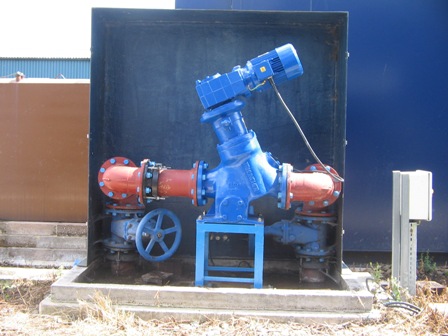
at its Banbury sewage treatment works in Oxfordshire to improve efficiency and prevent downtime caused by difficult to source spares.
The site was experiencing problems with its existing grinder from another manufacturer, which continually broke down and required quick delivery of replacement parts. These parts were often difficult and impossible to source causing unnecessary and lengthy downtime at the works.
To provide a solution to this problem, Thames water installed a Mono TR Muncher, which, as well as being highly reliable, has spares readily available from Mono's extensive stocks. The TR Muncher has been installed to macerate heavy solids and rags within the sewage sludge at a capacity of 100m3/h, prior to the sludge being transferred to a blender tank.
Kevin Gee, Mechanical Electrical Technician at Thames Water, who installed the Muncher says "We have a lot of major processes at this site and so we needed a grinder that would be able to cope with the high demands of the works, as well as provide us with a reliable solution that would reduce maintenance "he commented.
"We installed the high performance TR Muncher because we have worked with Mono previously and knew that spare parts for the TR Muncher were readily available, should we need them, greatly reducing downtime."
Comprehensive stocks of Mono parts are held at their head office in Manchester, as well as UK and international distributor locations. Same day delivery is available on request and Mono parts can be purchased online at www.mono-orders.com.
The TR Muncher, which has a capacity range of 0-500m3/h raw sewage and operates at pressures of up to 6 bar, features the latest generation of twin shaft grinding and is designed specifically for the efficient treatment of abrasive sludges.
The differential speed of the cutter stacks pulls apart fibrous material, whilst the leading edge and sides of the cutter teeth crop and shear plastic into small pieces. The circumferential 'land' of the cutter crushes friable or brittle material. The layback cutter shafts on the TR Muncher are set at an angle to the incoming flow. This more effective design allows the Muncher to capture irregular shaped objects and, if a rejection cycle is necessary, the object can be dropped into the built-in trash trap, which is set clear of and below the cutter stacks.